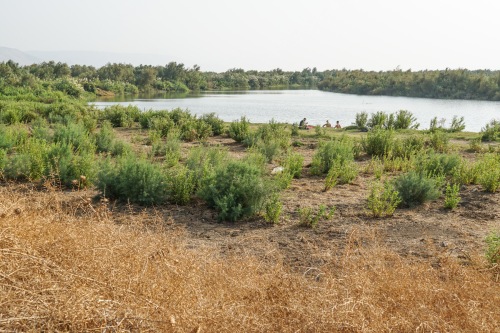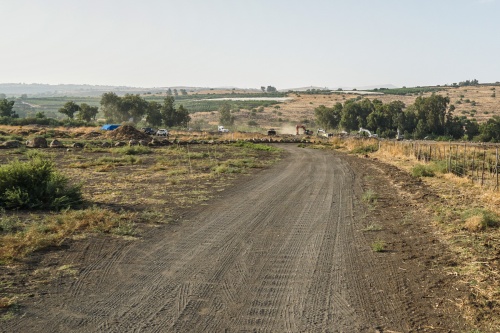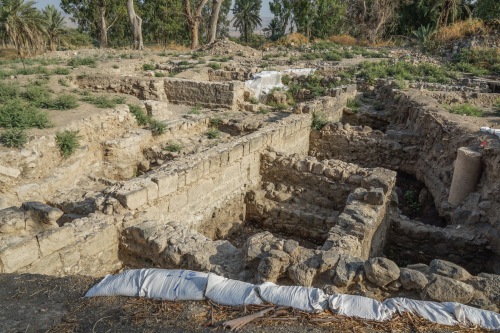On a recent trip to Israel, I decided to try to visit the site of el-Araj that is located on the northeastern shore of the Sea of Galilee, just east of the Jordan River. This site has been much in the news recently because it is a much better candidate for the Bethsaida mentioned in the New Testament, Josephus and other sources than “et-Tell.”

The Jordan River and Lagoon by el-Araj (Bethsaida/Julias).
According to the New Testament the disciples Philip, Andrew, and Peter were from the town (John 1:44; 12:21). In addition, Jesus performed mighty works there (e.g., healed a blind man [Mark 8:22], and fed 5,000 in the vicinity [Matt 14:13; Mark 6:30ff]) yet the town was cursed by him because of unbelief (Matt 11:21; Luke 10:13).
Steven Notley and Mordechai Aviam have conducted four seasons of excavations at the site and have found a bathhouse and a residence from the Roman Period. In addition, they have found the remains of a large Byzantine Church that they believe was The Church of the Apostles that was mention by Willibald in A.D. 725 as having been built over the house of Peter and Andrew.
My first visit to the site was with a group of adult learners from the Jerusalem University College. We turned off the main road east of the Arik Bridge at dusk and our bus took us partway in. We “debussed” quickly and set off at a brisk pace to try to reach the site before we lost all our daylight. We were surprised to find that there were already THREE tourist busses at the site—those of a large group led by Jonathan Cahn (of “Harbinger” fame). I have no idea why they were interested in the site, but we did hear them finish their “devotional” with the blowing of the shofar. Hmm . . . .
My second visit, a few days later, was with a group from the Biblical Archaeological Society that was being led by Ofir Dror and myself.

Our BAS Group hiking into el-Araj.
The tricky part in accessing the site was due to the fact that the Israelis were busy clearing minefields in the area. It was about a 12 minute walk in from where our bus parked.

Heavy equipment clearing minefields west of el-Araj.
Once we arrived at that excavations, we had a great time looking at the main place of excavation—Area A.

Area A of el-Araj—looking east.
I also had a chance to peek at Area C, about 100 yards to the north of Area A, where they have begun to uncover remains of a residence that dates to the Roman Period.

Area C — the area where a Roman residence has been partially excavated.
Finds from the house date from the first to the third centuries CE and include pottery, coins, fishing net weights, and a cooking oven.
For additional images of el-Araj you are invited to check out HolyLandPhotos.org.
The official website for the el-Araj excavations can be found Here. And there you will find numerous links to related newspaper articles. There are also a number of good videos of the site that have been posted on YouTube see Here for example.














